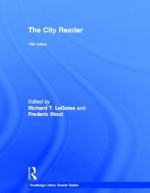|
This section contains 1,192 words (approx. 3 pages at 400 words per page) |

|
Part I: The Evolution of Cities Summary and Analysis
V. Gordon Childe's "The Urban Revolution" (1951) redefines the major eras of human development. Rather than using the traditional three ages of Stone, Bronze and Iron, Childe writes that development is better seen as occurring in the Paleolithic, Neolithic, urban, and industrial eras, with three revolutions separating them: the Neolithic, the urban, and the industrial. Childe believes that certain factors motivate this transformation, including the material base of society, the means of production and the available resources. These civilizations transformed with rises in population and various professions. He gives examples of cities and civilizations from each era: first, Egypt, Sumner, and India; then Crete, from 3000-2000 B.C.; later, Spain, Britain, and Germany, around 1500 B.C., and eventually Scandinavia and Siberia around 1,000 B.C.
In H.D.F. Kitto's "The Polis," (1951), the...
(read more from the Part I: The Evolution of Cities Summary)
|
This section contains 1,192 words (approx. 3 pages at 400 words per page) |

|




